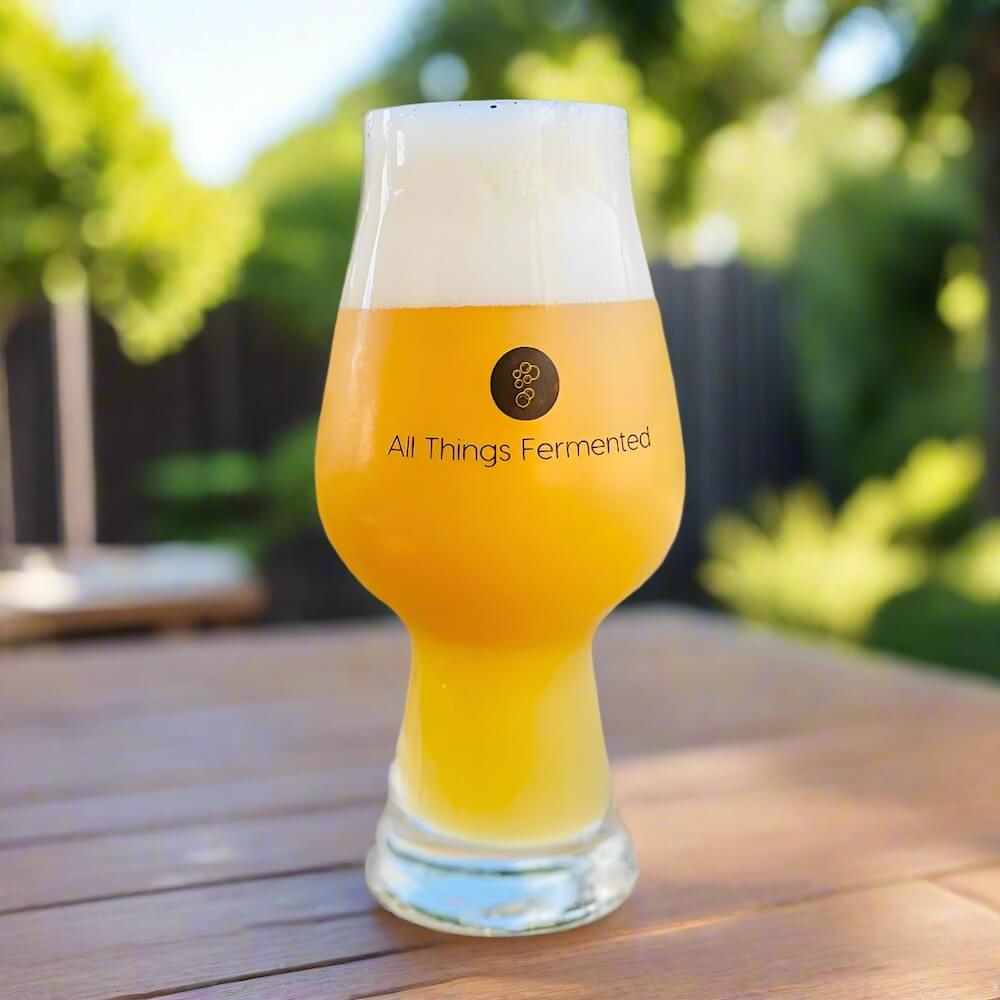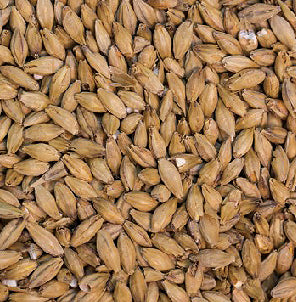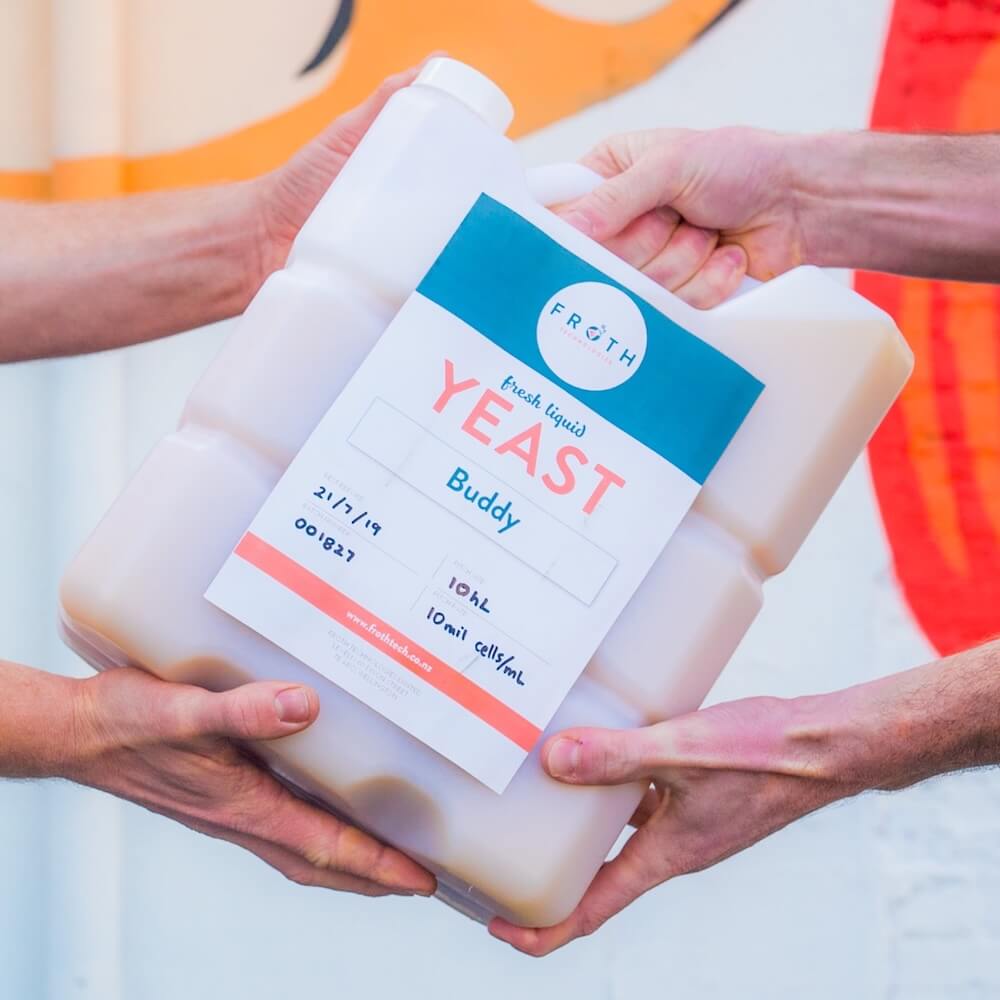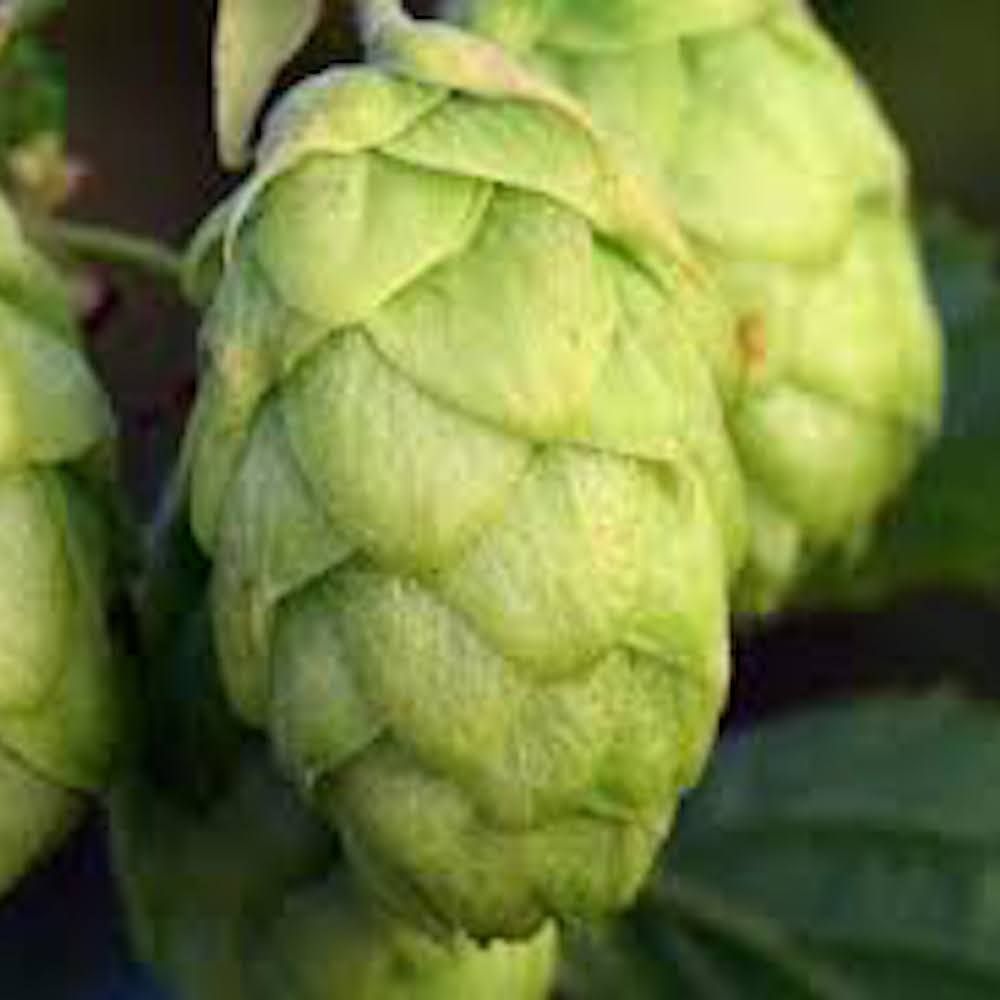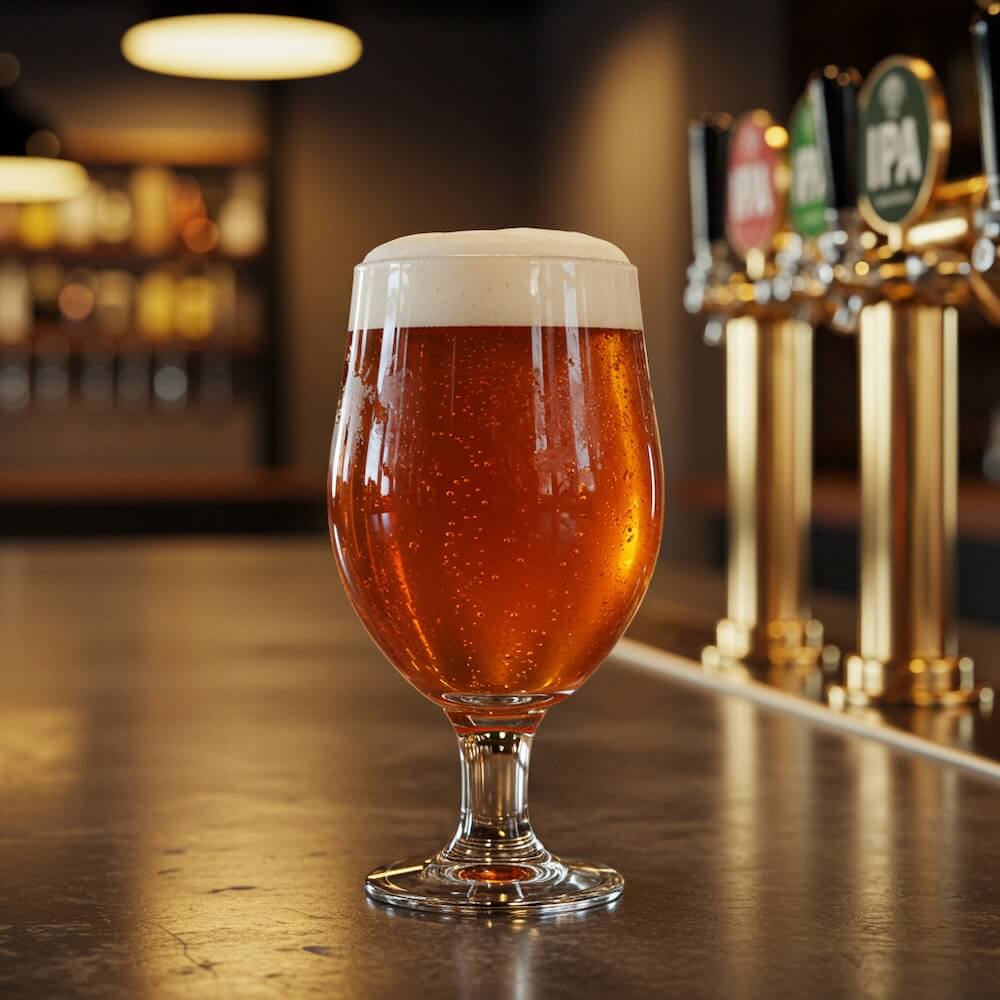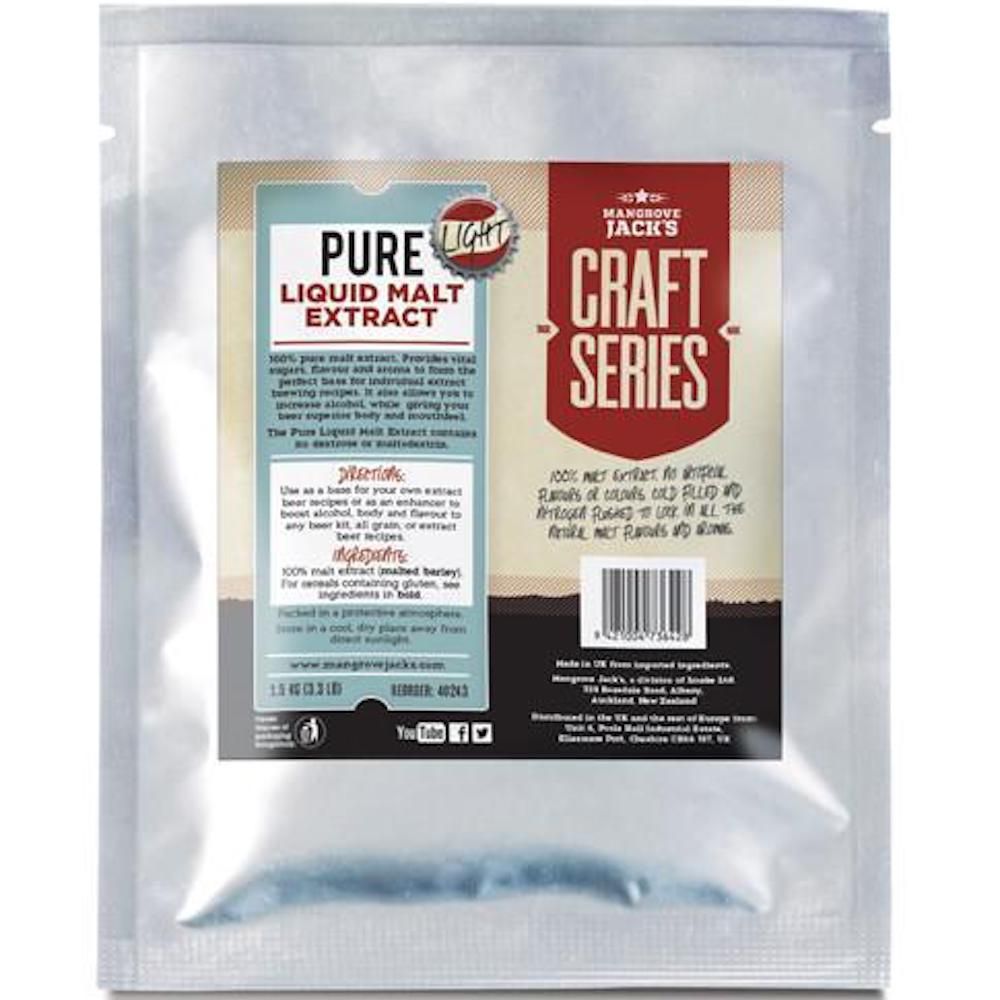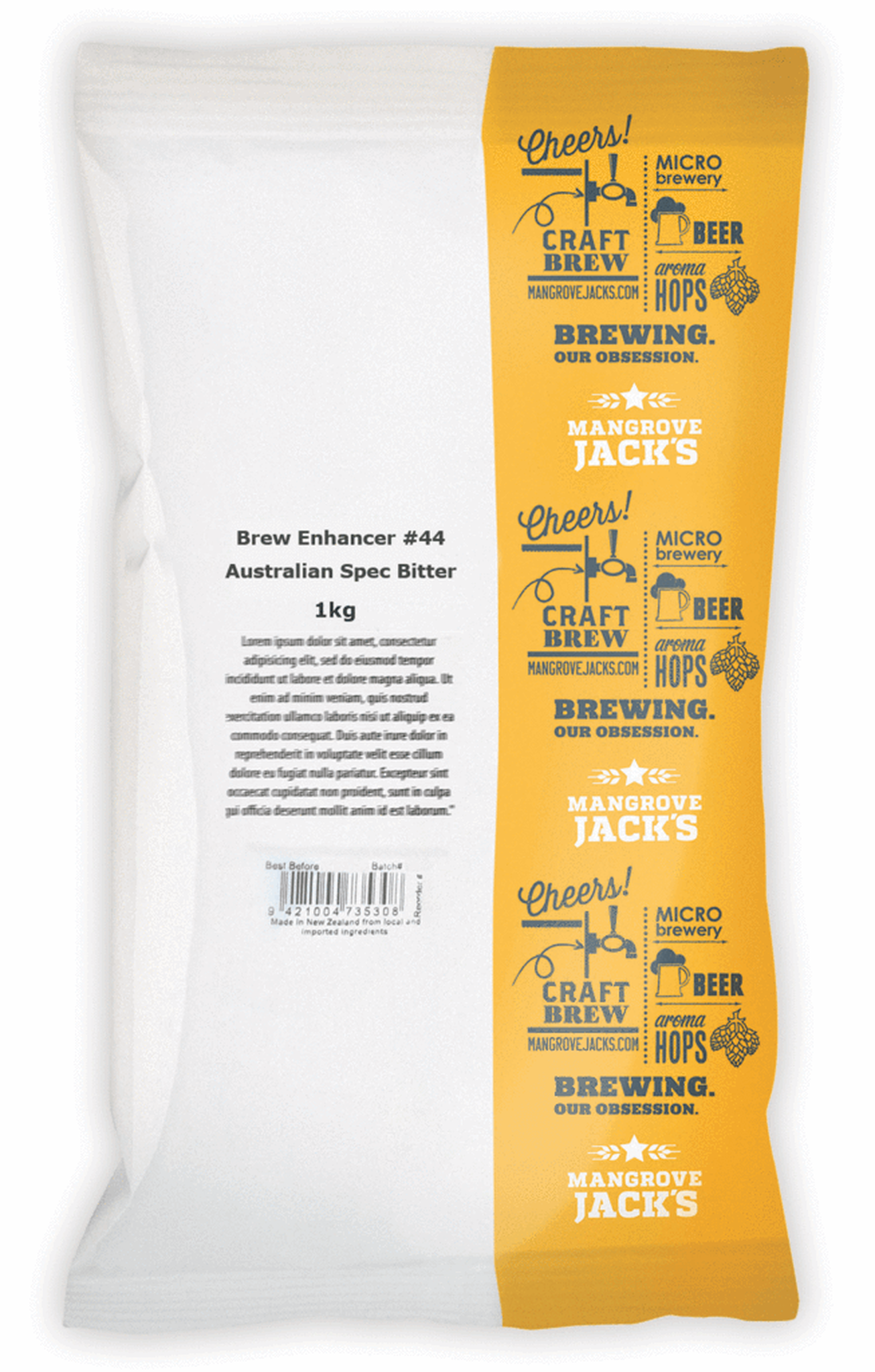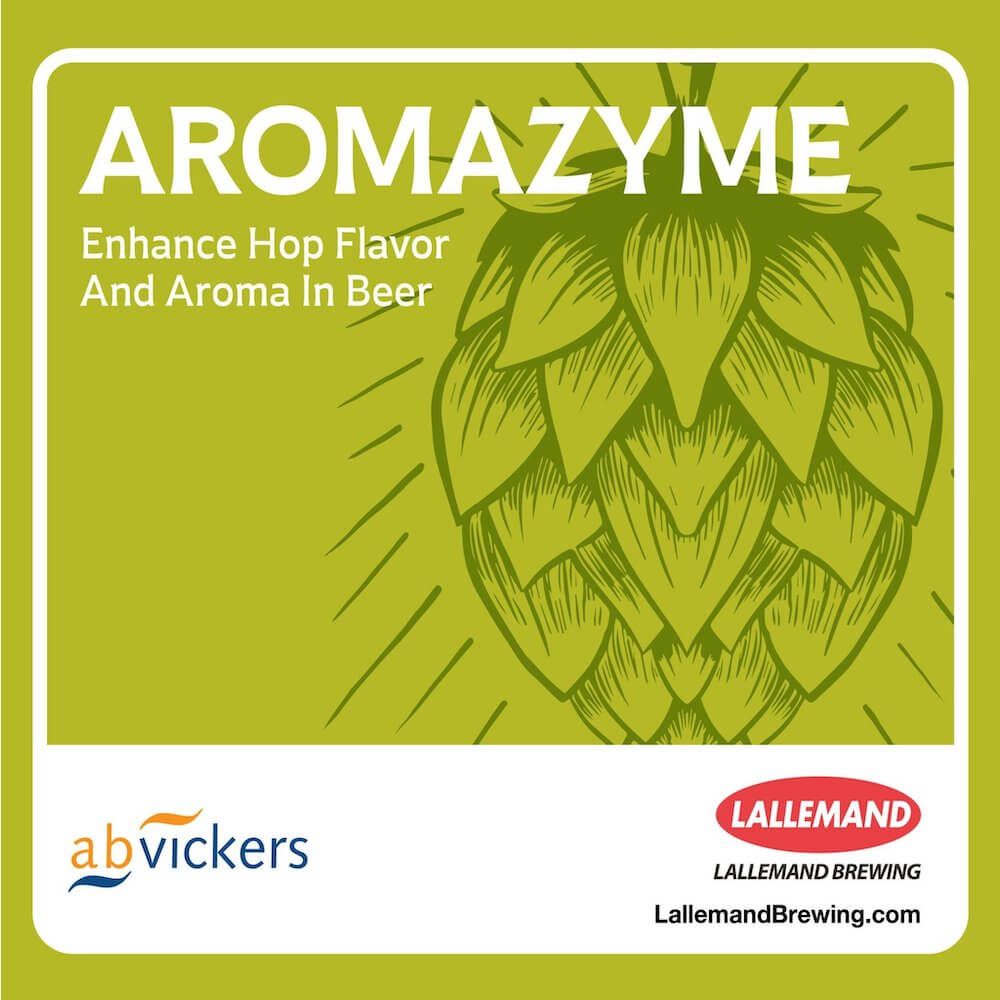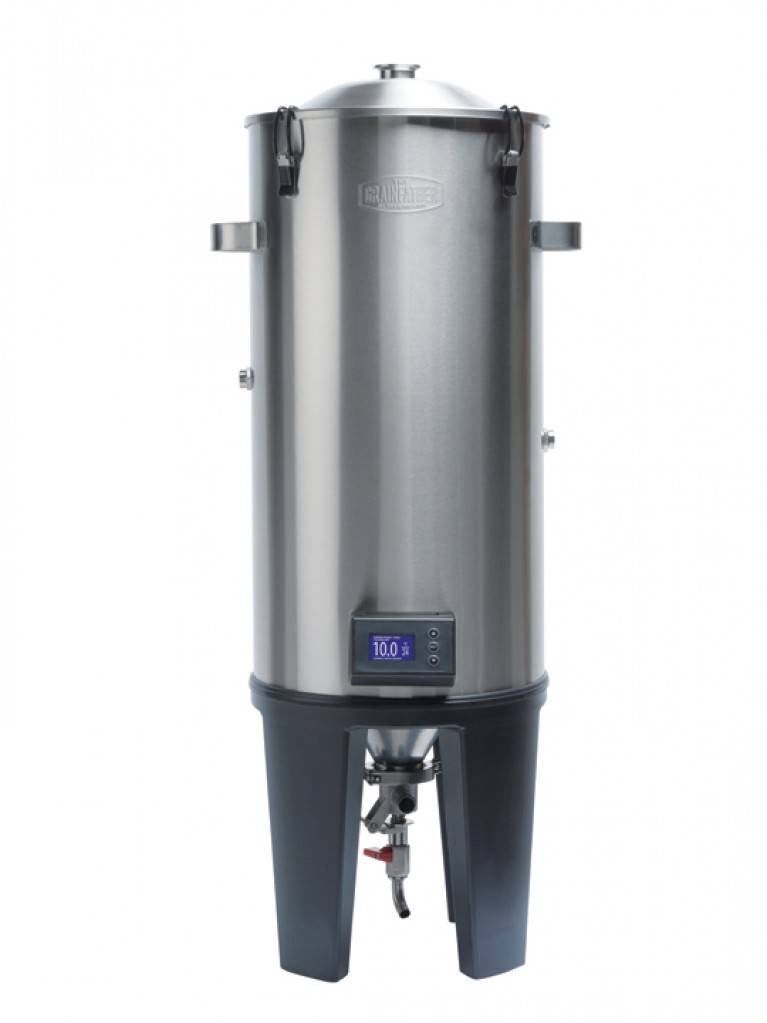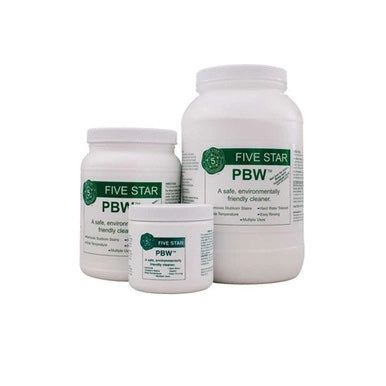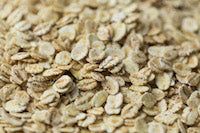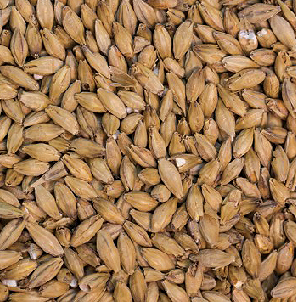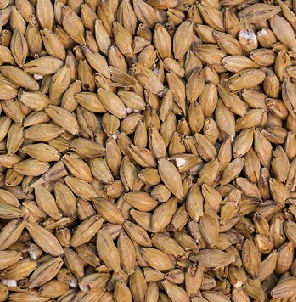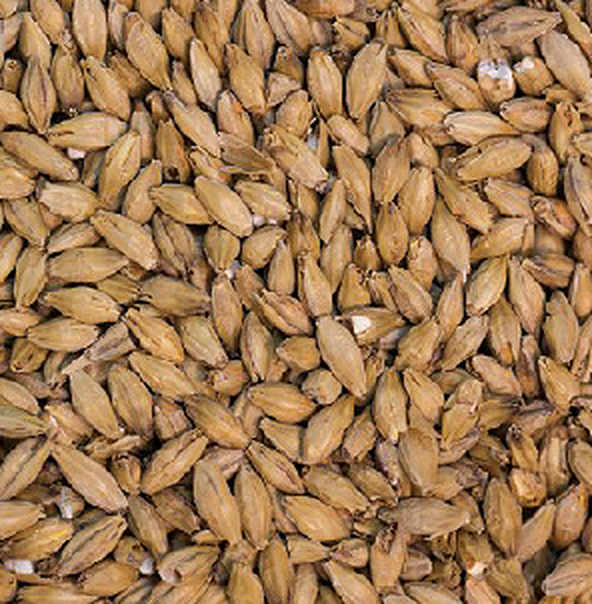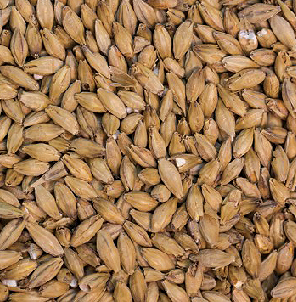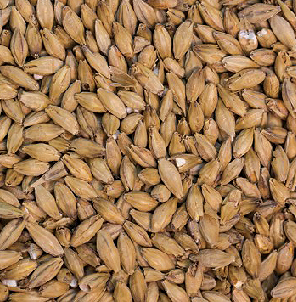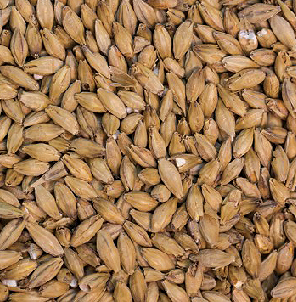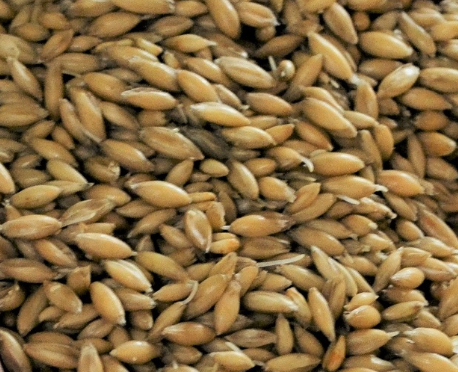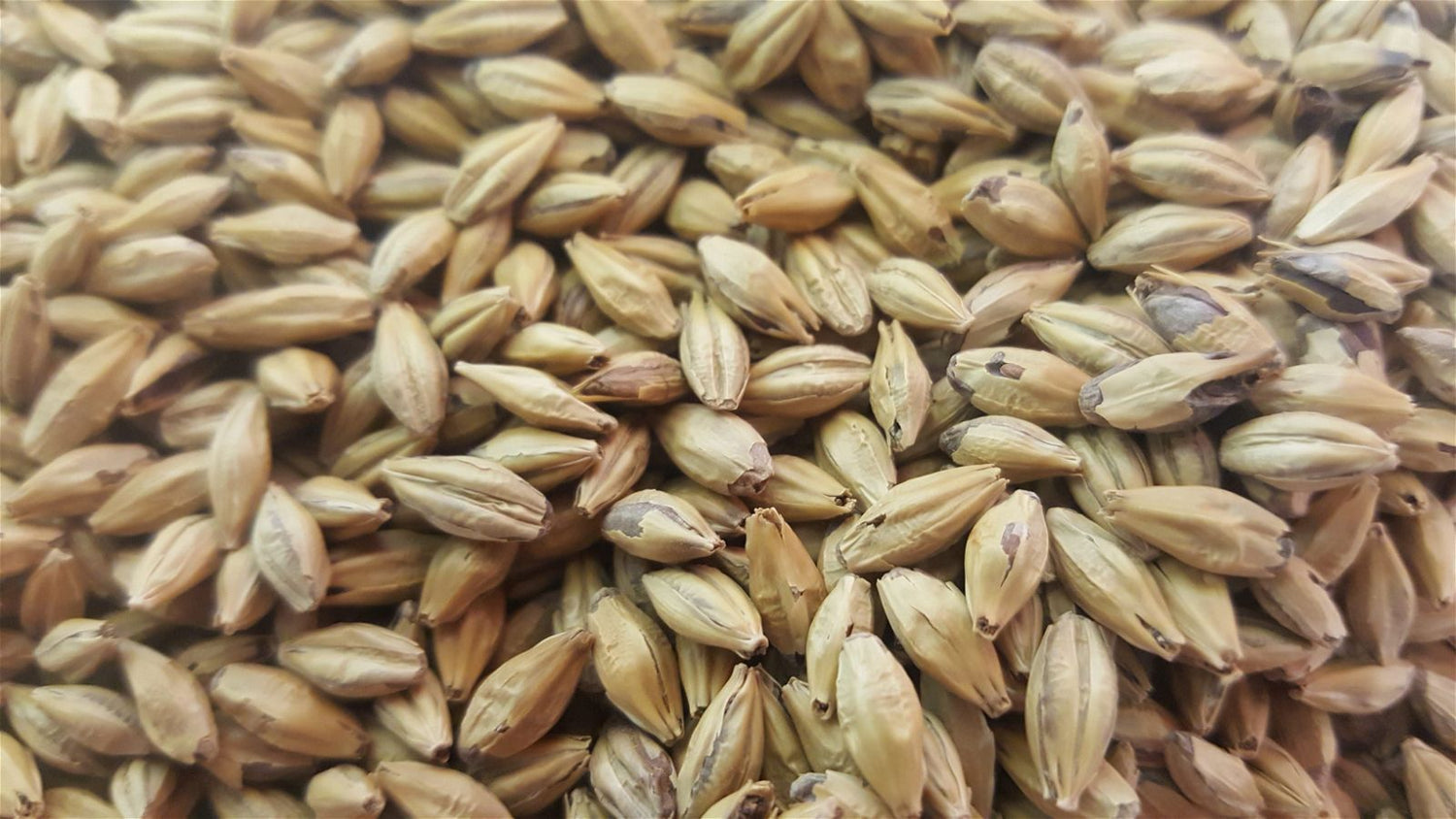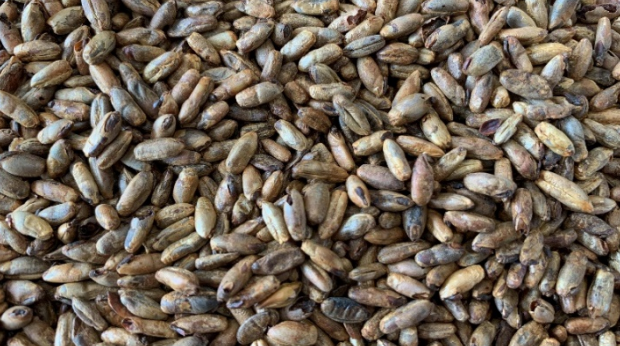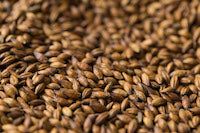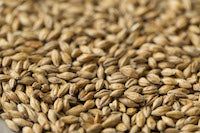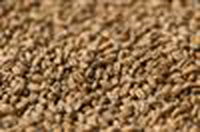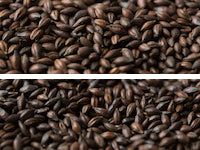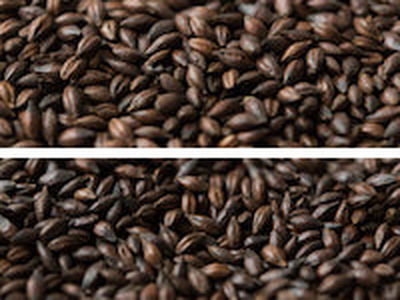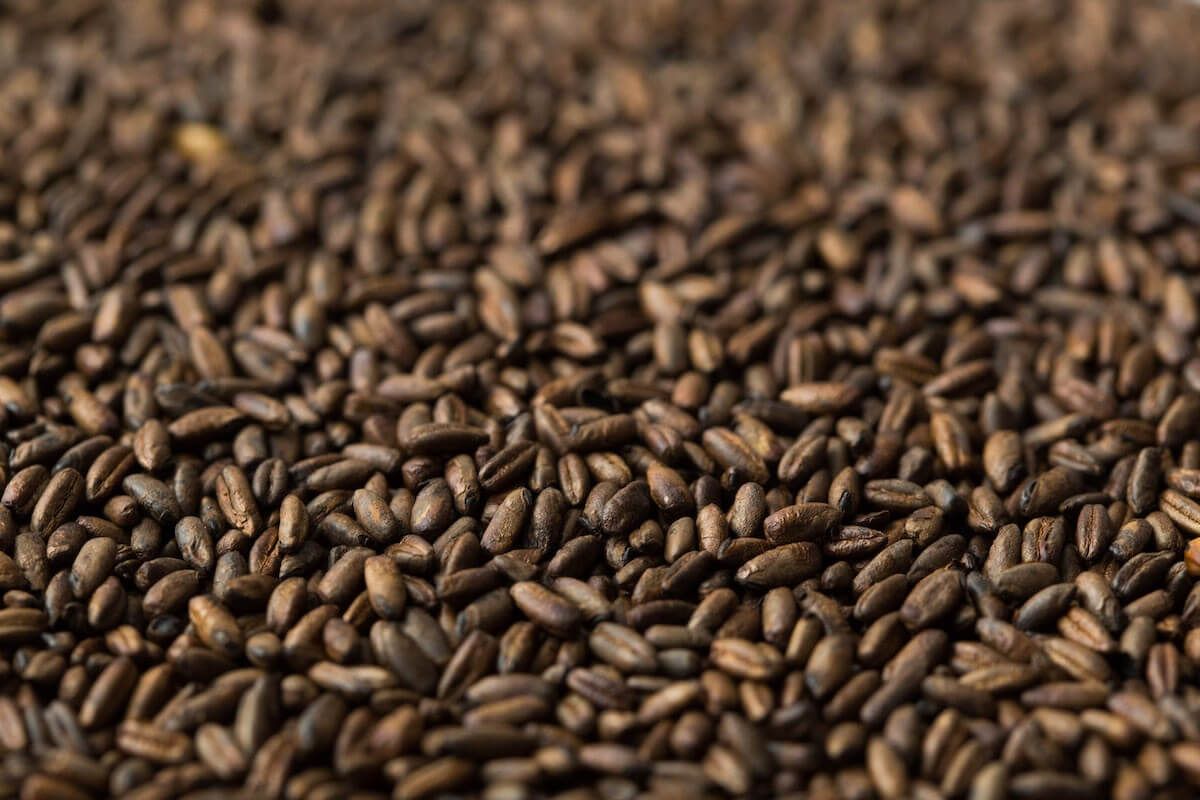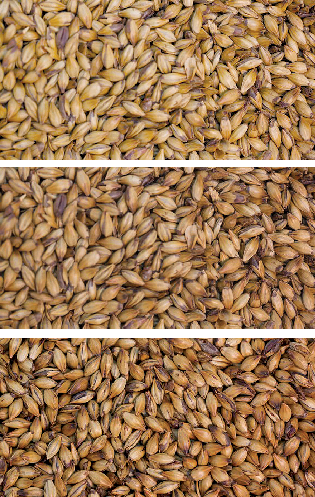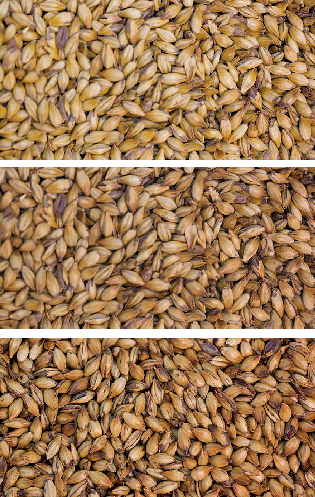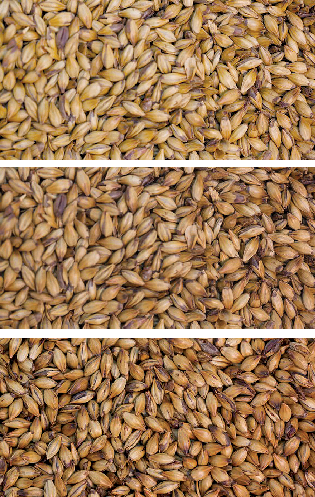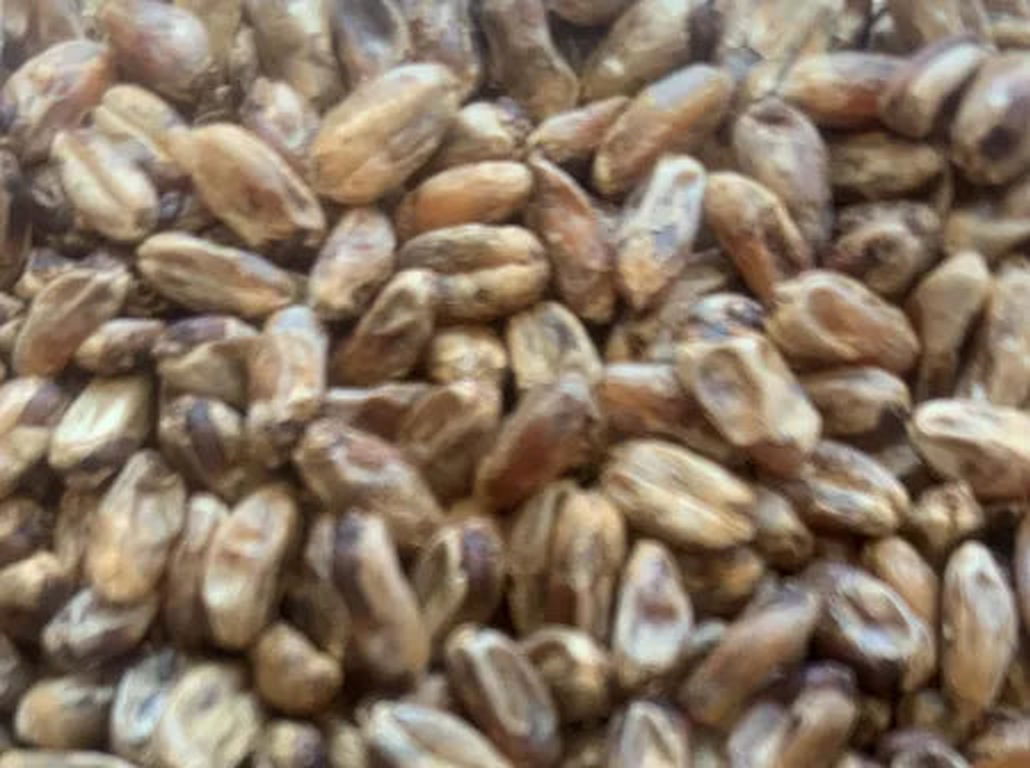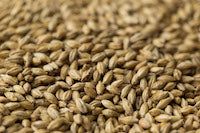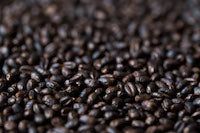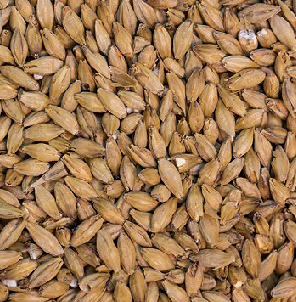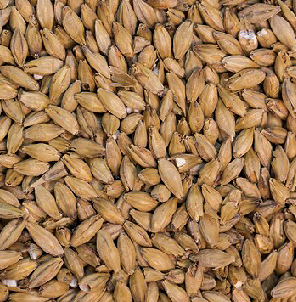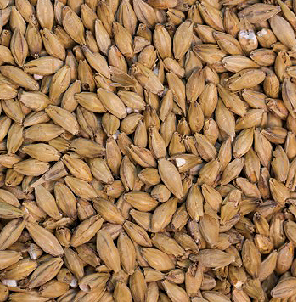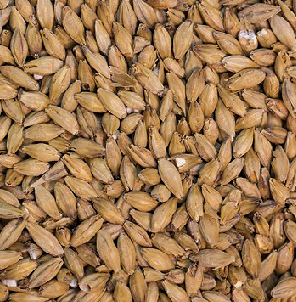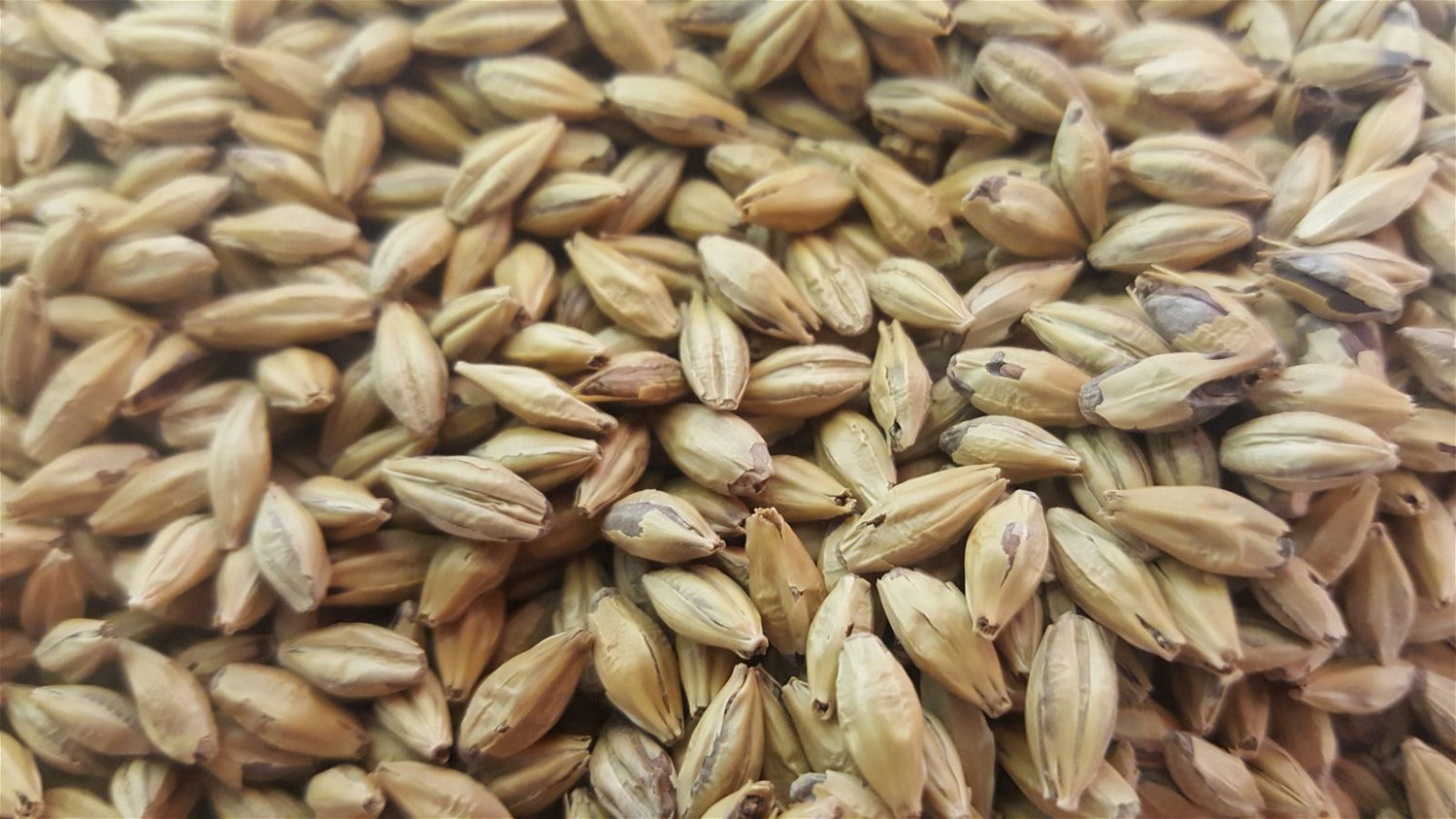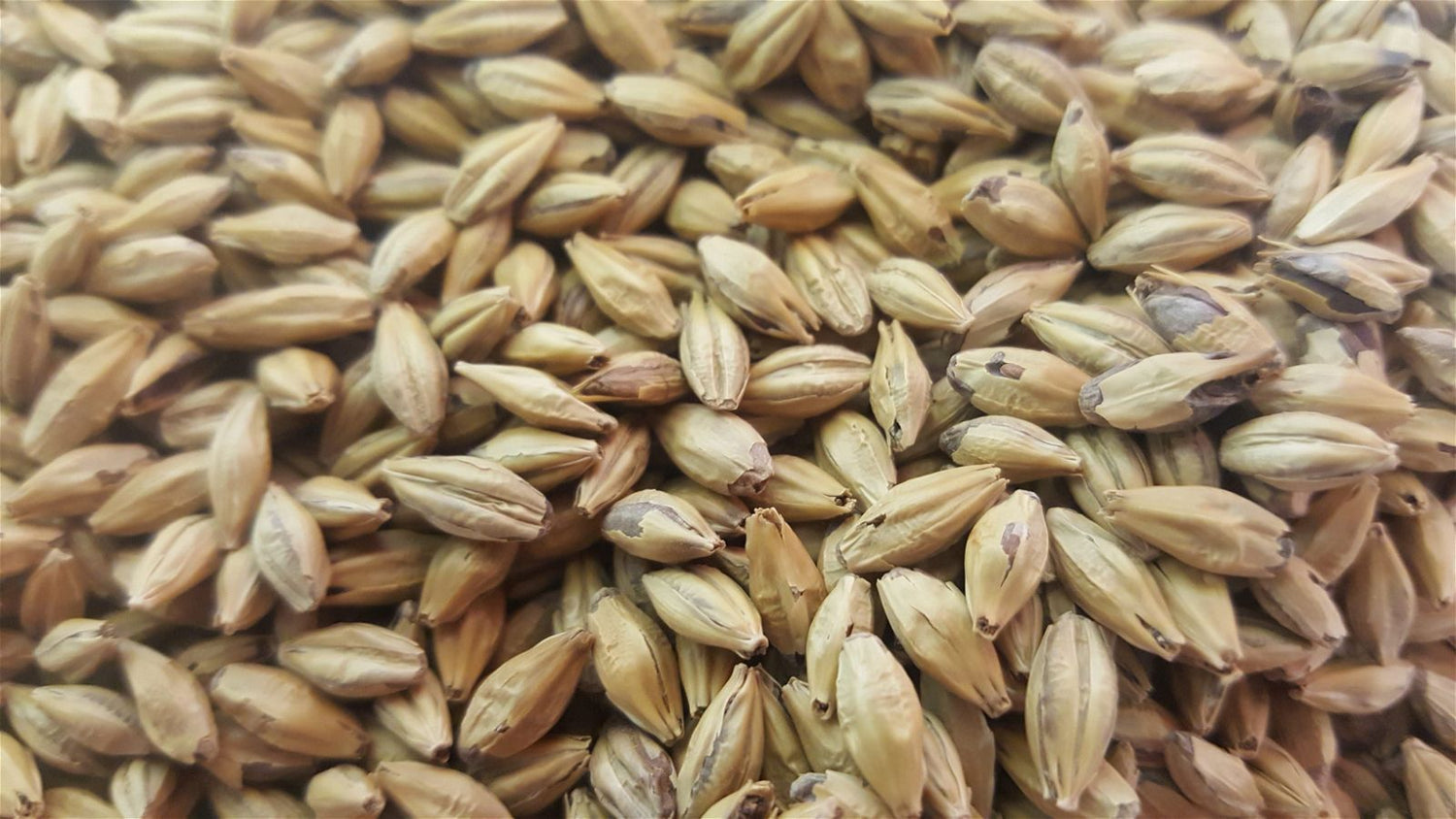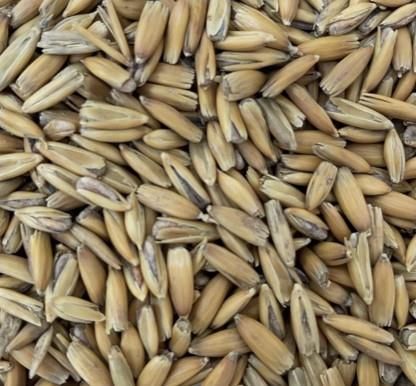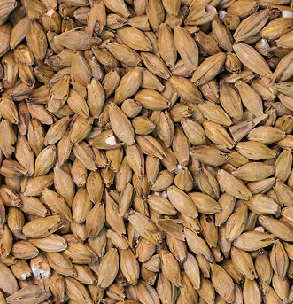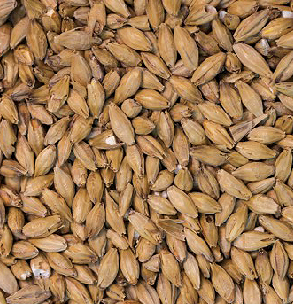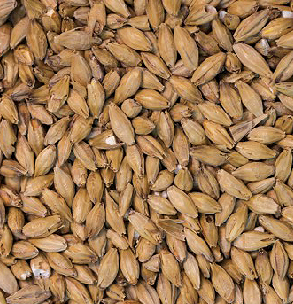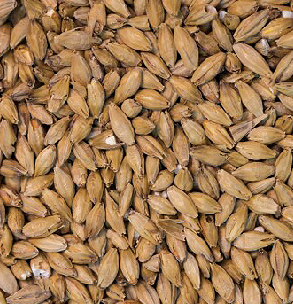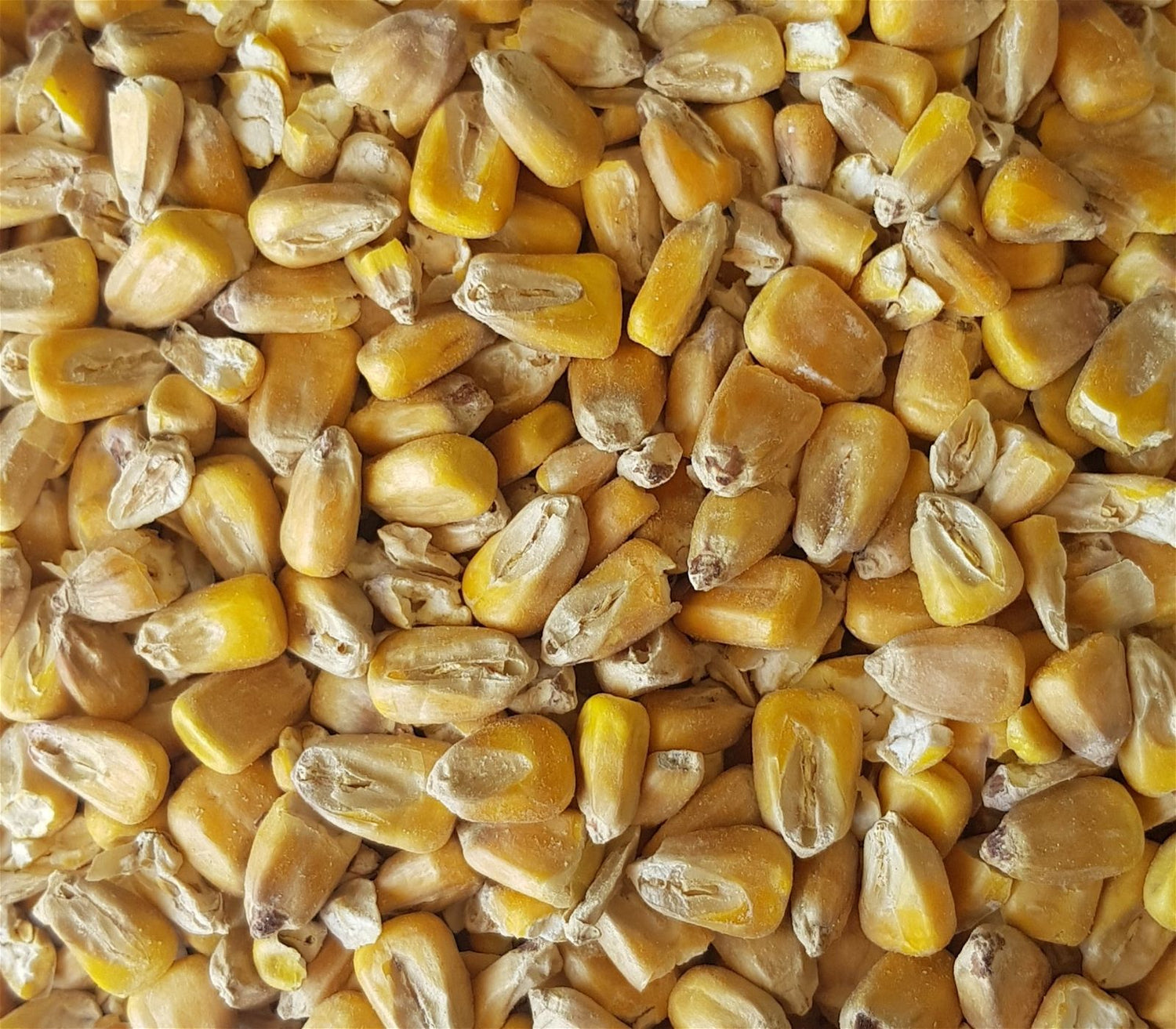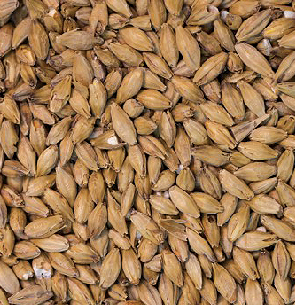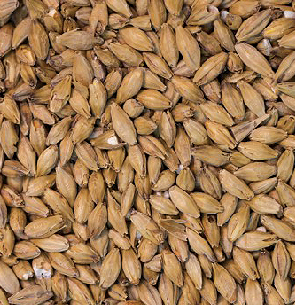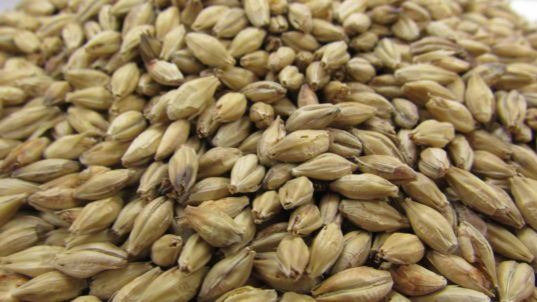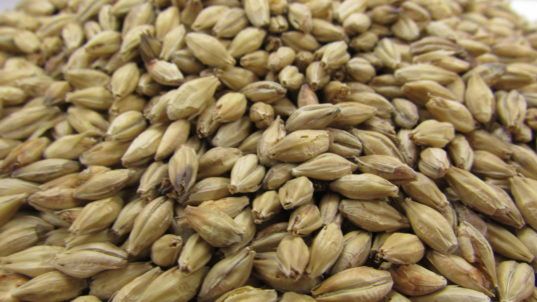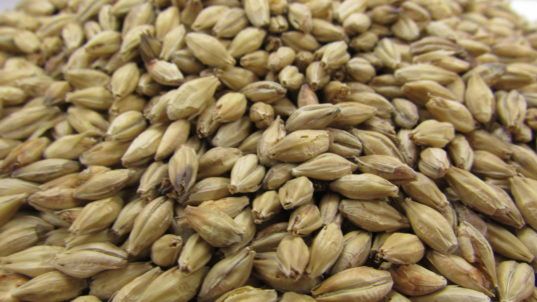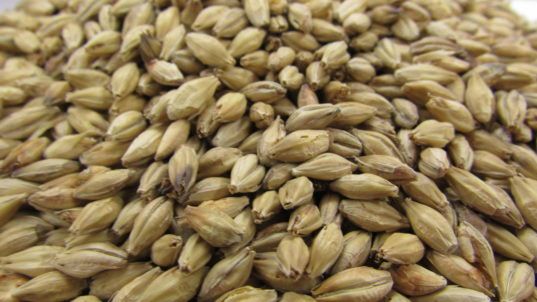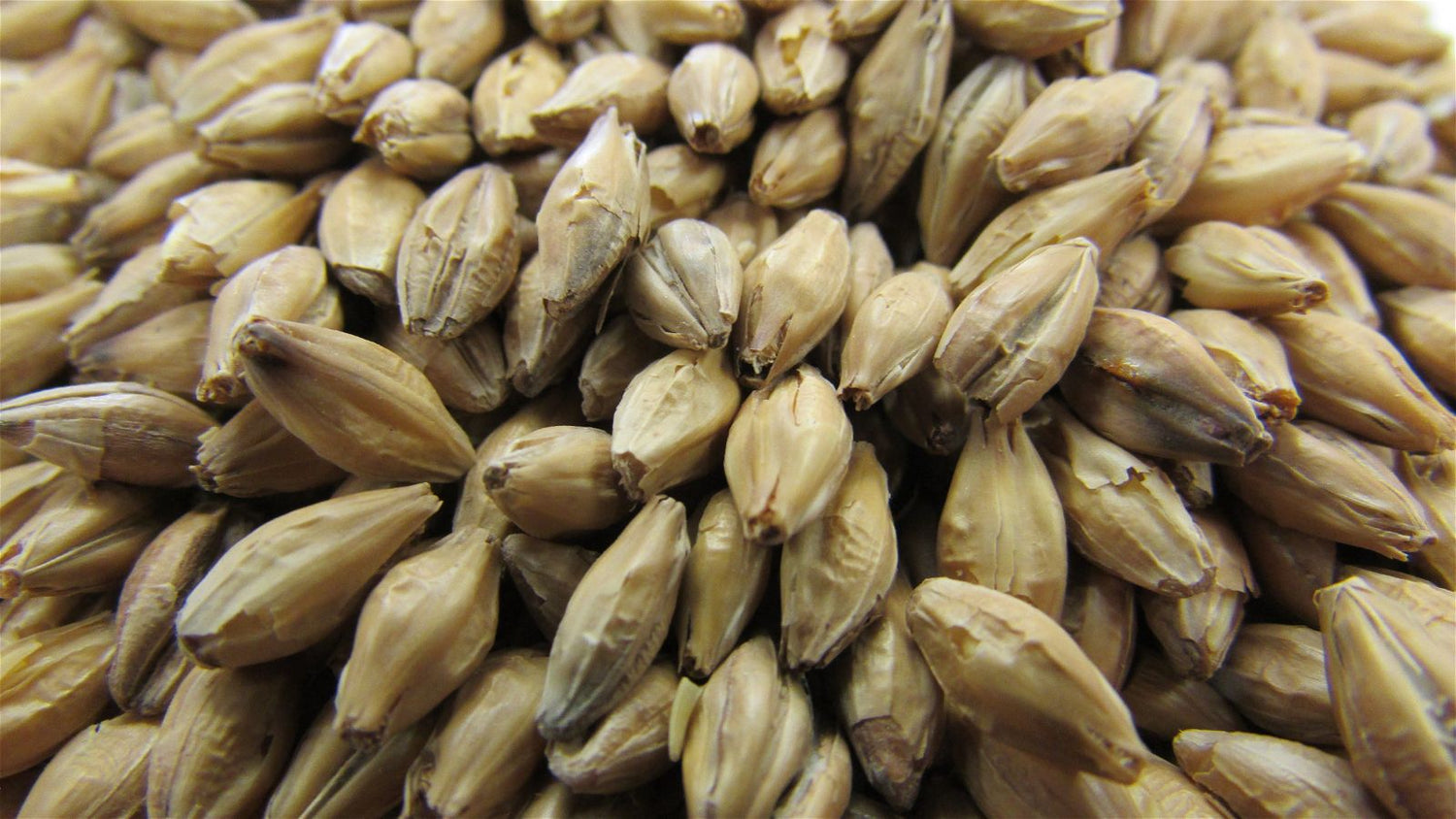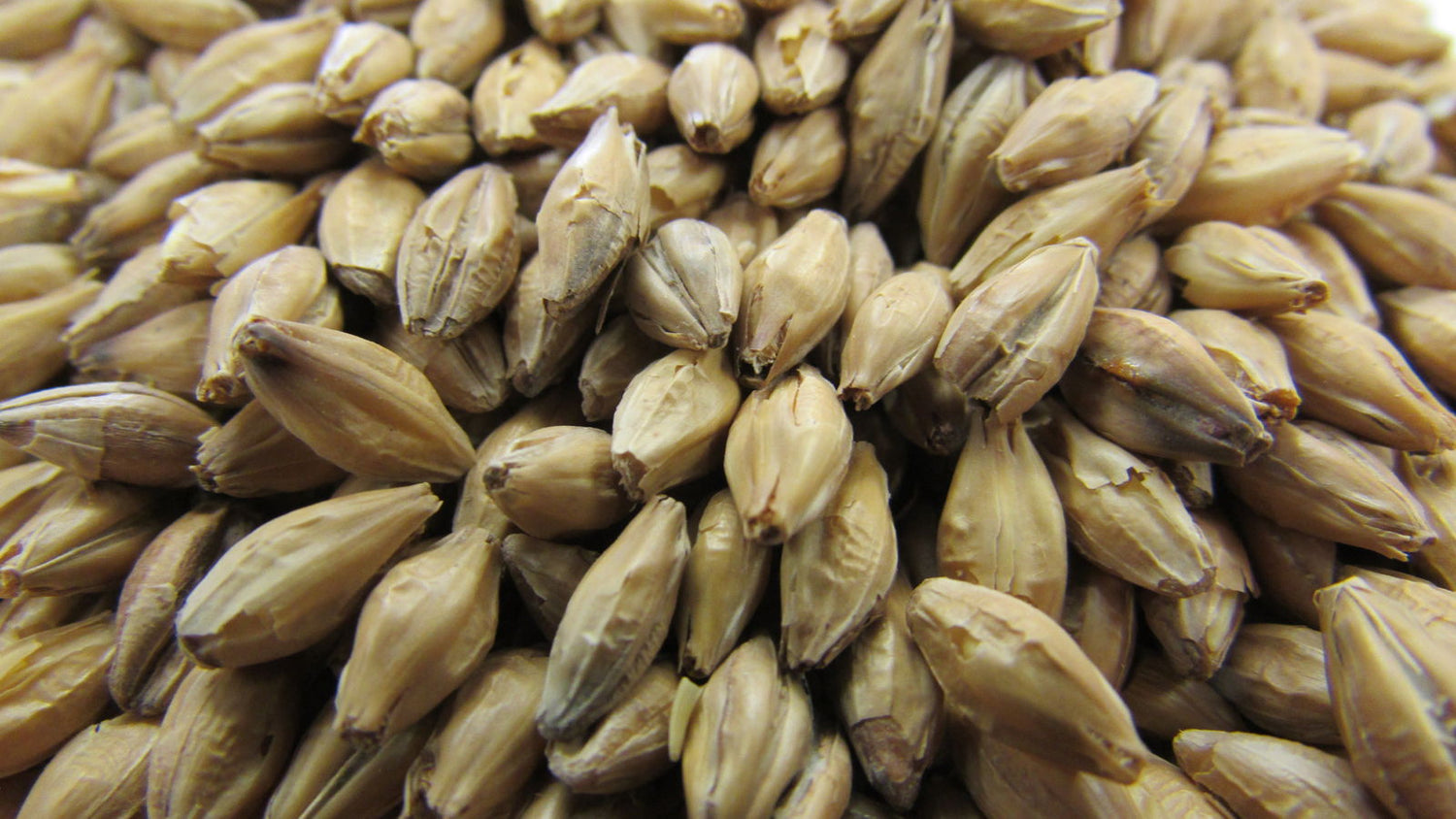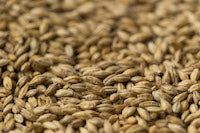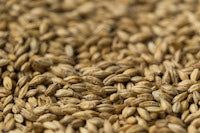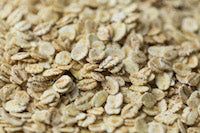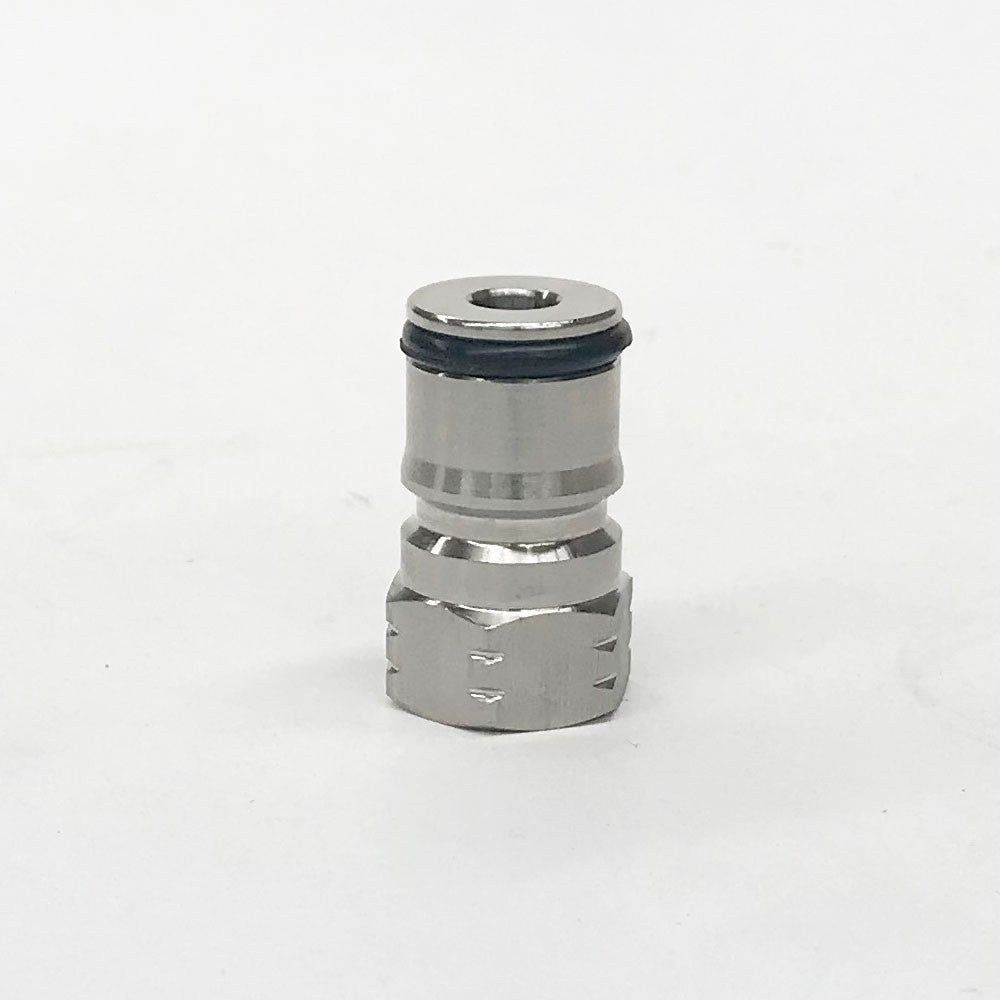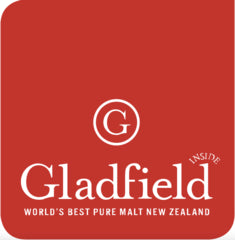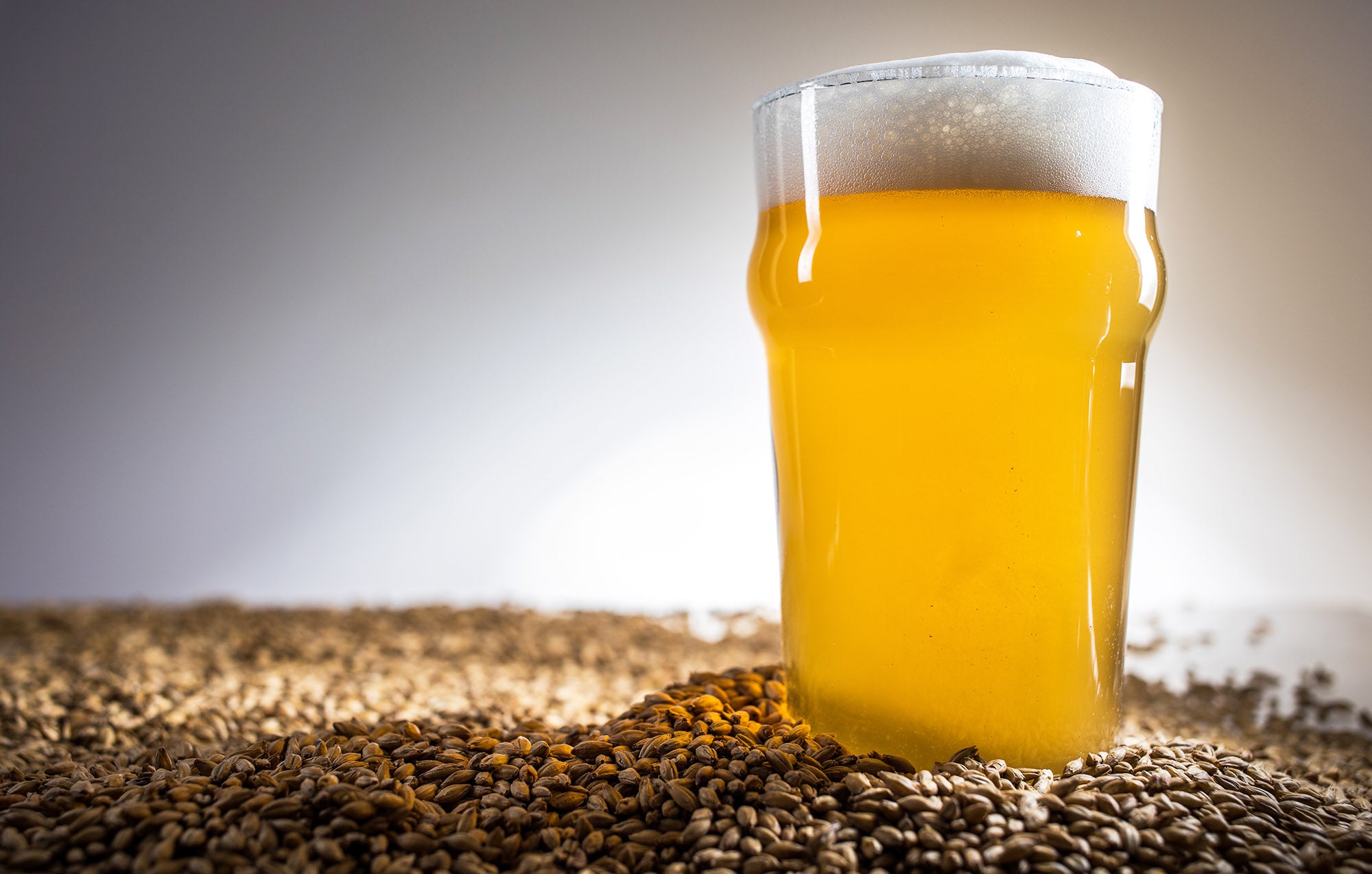Sort by:
Blue Lake Milling Rolled Barley Flakes are traditionally dehulled barley grains, that have been steamed and rolled flat under heavy rollers.
It imparts a rich, smooth, and grainy flavour and is commonly used in stouts, but can also perform well as an adjunct in German style pilsners, as it can produce lighter colour without lowering the gravity.
Rolled/Flaked Rice lightens the body and increases crispness of a beer. Commonly used in American and Japanese lagers.
Rice Flakes are derived from brown grains of rice, that have been rolled into flat flakes under heavy rollers. Prime Australian rice is a natural grain sourced from growers who have declared their crops to be free of genetically modified organisms.
Base Malt
Also known as: Pale Ale Malt
Sub Malt for: Maris Otter Malt
Gladfield Ale Malt is grown from plump, low protein Autumn barley varieties and is one of the most popular base malts. Ale Malt is highly friable but the soluble nitrogen ratios are kept relatively low to enhance mouth feel and head retention when brewed. This Malt has been fully modified through a traditional long cool germination resulting in higher extract potential. This type of modification helps eliminate haze issues in the beer. The kilning regime gives a nice toasty character to the malt and makes it perfect to use to brew a traditional English style.
Use: This is a base malt with a distinctly English character, suitable for many beer styles.
Rate: Up to 100%
Click here to view the malts typical malt analysis.
Base Malt
Also known as: Pale Ale Malt
Sub Malt for: Maris Otter Malt
Gladfield Ale Malt is grown from plump, low protein Autumn barley varieties and is one of the most popular base malts. Ale Malt is highly friable but the soluble nitrogen ratios are kept relatively low to enhance mouth feel and head retention when brewed. This Malt has been fully modified through a traditional long cool germination resulting in higher extract potential. This type of modification helps eliminate haze issues in the beer. The kilning regime gives a nice toasty character to the malt and makes it perfect to use to brew a traditional English style.
Use: This is a base malt with a distinctly English character, suitable for many beer styles.
Rate: Up to 100%
Click here to view the malts typical malt analysis.
Base Malt
Gladfield’s American Ale Malt is perfect for brewers who have found that our regular Ale Malt adds too much of a malty, toasted flavour profile to certain beer styles. This base malt has been made from plump low protein Autumn barley varieties and then subjected to our traditional long cool germination period. The grains are then kilned using a special recipe that imparts a typical Ale colour for a cleaner, less toasted flavour. When brewed, this malt produces a vibrant, clean, yet solid hop‑forward malt profile and is perfect for producing American-style beers. The American Ale Malt offers the brewer scope for innovation and the ability to create beers that are full of character and sophistication.
Use: Base malt for use in hop-forward beers.
Rate: Up to 100%
Click here to view the malts typical malt analysis.
Base Malt
Gladfield’s American Ale Malt is perfect for brewers who have found that our regular Ale Malt adds too much of a malty, toasted flavour profile to certain beer styles. This base malt has been made from plump low protein Autumn barley varieties and then subjected to our traditional long cool germination period. The grains are then kilned using a special recipe that imparts a typical Ale colour for a cleaner, less toasted flavour. When brewed, this malt produces a vibrant, clean, yet solid hop‑forward malt profile and is perfect for producing American-style beers. The American Ale Malt offers the brewer scope for innovation and the ability to create beers that are full of character and sophistication.
Use: Base malt for use in hop-forward beers.
Rate: Up to 100%
Click here to view the malts typical malt analysis.
Base Malt
Also known as: Honey and Melanoidin Malt
Gladfield’s Aurora Malt is an aromatic malt which has been developed to produce rich bready, fruit cake aromas and imparts an orange/red colour to the brew. If you want to make that big malty, robust beer, then this is a great malt to use. The barley has undergone a long traditional germination process followed by a carefully controlled kilning regime to create a reaction between the complex sugars and amino acids. The resulting Maillard reaction is responsible for the colour, flavour and aroma of our Aurora Malt. This malt is ideal for brewing dark ales, Belgium styles, and high alcohol beers. Crystal Malt will add sweetness to Aurora Malt and further enhance the bready and fruitcake aromas. RedBack and Shepherds Delight malts bring out the red colours of Aurora and also introduce complementary flavours to the finished beer.
Use: Aurora Malt adds a rich malt flavour to beers.
Rate: Up to 100%
Sub-Base Malt
Big O - Malted oats are a great addition to use instead of a rolled or flaked product. Whole oats are fully modified and kilned to give a rich oat, nutty flavour. Big O -Malted Oats have a few great attributes that make a preferred product for Stouts and Hazy IPAs: They have a large, thick husk which greatly aids in sparging and run-off. They have much more flavour – kilned to enhance the nutty, oaty flavours and bring more to the table than a flaked product. They bring the same silky smoothness to a beer that a rolled oat will. Big O provides a better haze than rolled oats alone in your hazy IPAs. Some brewing notes: The oats and husk will absorb more water so be prepared to increase the amount of your strike water. Mix the oats with the barley during milling to help deliver an even crush.
Rate: Up to 20%
Click here to view the malts typical malt analysis.
Speciality Malt
Also known as: Amber Malt
Gladfield’s Biscuit Malt is made by gently roasting kilned-dried Ale Malt. Gladfield’s Biscuit Malt is ideal when used in small amounts to give a dry, toasted biscuit finish to light, mild ales and bitters where brewers do not want to add much colour. We recommend Gladfield’s Biscuit Malt in beer styles that call for a dry finish. ESB, Pale Ales and Mild Ales are styles that come to mind. Typical usage rates are 5–15% and are mindful that Biscuit Malt has a typical colour of 65 EBC.
Use: Add Biscuit Malt to impact a dry toasted biscuit flavour without adding much additional colour to the final beer.
Rate: Up to 15%
Click here to view the malts typical malt analysis.
Speciality Malt – Limited Release
Think of Shepherds Delight Malt, now open your mind to the possibility to brew a beer with the same great attributes that Shepherds Delight Malt offer (red colour, malty, currant and fruit cake flavours) using Rye as the grain. The possibilities are huge. Add spiciness to Old Ales, add complexity to ESB, Pale Ales, you name it.
And guess what, no one in the world produces anything like this malt, so you are you in for a treat.
Rate: Up to 10%
Click here to view the malts typical malt analysis.
Speciality Malt
Gladfield’s Brown Malt is a stronger version of our Biscuit Malt. Gladfield’s Brown Malt is made from green chitted malt which imparts good amber colour build up without the astringency from husk damage. This malt gives a dry biscuit, toasted hazelnut style flavour to the beer along with nice amber colour. Brown Malt is ideal for use in Porters, Stouts, Dark Ales or Dunkels in small amounts.
Use: Brown Malt imparts a rich dry biscuit, nutty, light roasted flavour and gives the beer a deep amber hue.
Rate: Up to 15%
Click here to view the malts typical malt analysis.
High Protein Specialty Malts
The term “chitting” in malt represents the first stage of germination, where the barley has taken up enough moisture from steeping to start the magic process of converting starch into soluble sugars. Chit malt has a particularly high level of inherent starter enzymes, which contribute significantly to improving the conversion of starch, thus increasing the yield.
Precisely how Chit Malt can improve a beer’s mouthfeel and head retention results from when we kiln the malt; during the early stages of starch modification. Kilning at this point leaves long protein chains in the malt from the enzymes produced at chitting. These remain in the beer at higher levels, after fermentation.
Beers produced with Chit Malts retain higher protein content and these proteins contribute to increased levels of foam-positive proteins and improved head retention. They can also impart added mouthfeel, particularly in direr beer styles like Sours and Saisons.
Chit Malt is a great alternative to using raw adjuncts. The flavour impact in a beer is minimum if used at rates between 1-4%, with subtle green, grassy, raw grain flavours developing when used in higher percentages.
Chit Barley Malt is a great malt to achieve superior foam stability. In our opinion a must malt to use in Sour beers, Saisons, Hazy beers and Low alcohol beers.
Rate: Up to 15%
Click here to view the malts typical malt analysis.
High Protein Specialty Malts
The term “chitting” in malt represents the first stage of germination, where the barley has taken up enough moisture from steeping to start the magic process of converting starch into soluble sugars. Chit malt has a particularly high level of inherent starter enzymes, which contribute significantly to improving the conversion of starch, thus increasing the yield.
Precisely how Chit Malt can improve a beer’s mouthfeel and head retention results from when we kiln the malt; during the early stages of starch modification. Kilning at this point leaves long protein chains in the malt from the enzymes produced at chitting. These remain in the beer at higher levels, after fermentation.
Beers produced with Chit Malts retain higher protein content and these proteins contribute to increased levels of foam-positive proteins and improved head retention. They can also impart added mouthfeel, particularly in direr beer styles like Sours and Saisons.
Chit Malt is a great alternative to using raw adjuncts. The flavour impact in a beer is minimum if used at rates between 1-4%, with subtle green, grassy, raw grain flavours developing when used in higher percentages.
Chit Wheat offers new options for your Saisons, Sours, Low alcohol beers or Hazy Pale Ales and IPA's.
Chit Wheat can add noticeable body and velvety mouthfeel, due to wheat’s high protein content, combined with killing it at the chitting stage. Use alone, as a substitute for raw, flaked and rolled grains or in conjunction with Chit Barley.
The higher enzymatic activity in Chit Malt can also increase mash efficiency and starch conversion rates when paired with these cheaper, unmodified cereal grains.
Rate: Up to 5%
Click here to view the malts typical malt analysis.
Speciality Malt
Brewers are often wary of using Chocolate Malts because they are often associated with imparting bitter, harsh and astringent flavours. These flavours are formed when the husk is burnt during the roasting process. At Gladfield Malt, we have perfected a unique process that keeps the husk moist during the roasting process which limits these bitter and astringent flavours from forming. Gladfield’s Chocolate Malts are still darker malts, but impart smooth roast flavours to the brewed beer.
Dark Chocolate Malt
Gladfield Dark Chocolate Malt is dark in colour and light on astringency due to our unique roasting technique. It has lovely coffee/chocolate aromas and is a big hit with Porter and Stout drinkers. This malt must be used fresh.
Use: Adds deep coffee, chocolate and dark roast flavours.
Rate: Up to 10%
Click here to view the malts typical malt analysis.
Speciality Malt
Brewers are often wary of using Chocolate Malts because they are often associated with imparting bitter, harsh and astringent flavours. These flavours are formed when the husk is burnt during the roasting process. At Gladfield Malt, we have perfected a unique process that keeps the husk moist during the roasting process which limits these bitter and astringent flavours from forming. Gladfield’s Chocolate Malts are still darker malts, but impart smooth roast flavours to the brewed beer.
Gladfield Light Chocolate Malt is a lighter version of our Dark Chocolate Malt. It is produced in a similar way but roasted to a lower temperature and has a lighter colour. This malt gives fantastic roasted and espresso coffee like flavours. A great addition to Stouts and Porters.
Use: Adds coffee, chocolate and roast flavours.
Rate: Up to 15%
Click here to view the malts typical malt analysis.
Specialty Malt
Richly roasted to bring a smooth espresso creaminess to your dark beers with a touch of rye spiciness.
Beautiful in a porter or oatmeal stout where the coffee spice character is particularly well matched with the roast malts. Adds a further level of complexity to Vienna Malt in a Dunkel, or even something a little uncommon to a mild or English brown.
Use: Enhance aroma and flavour characters without imparting bitterness or astringency.
Rate: Up to 1% - 5%
Click here to view the malts typical malt analysis.
Speciality Malt
Crystal Malts, also known as Caramel Malts, are used to add colour, flavour and sweetness to beer. Gladfield’s Crystal Malts are made from lower to mid-range nitrogen winter or autumn barley varieties, that are soaked in water, germinated, left wet and then heated. This converts the sugars while they are still in the grain. We then roast our Crystal Malts in our high-tech purpose-built roasting drum making sure that the crystallisation process is even throughout. This gives a sweetness and even colour to the final malt.
Crystal Malts have no diastatic power, so must always be used in conjunction with a base malt. Crystal Malt can be used in varying amounts and intensities to an array of beer styles to add colour, flavour and aroma to the beer. It is important to note that our Crystal Malt must be used fresh to get the best results.
Use: Adds a nutty bittersweet caramel flavour and body.
Click here to view the malts typical malt analysis.
Speciality Malt
Crystal Malts, also known as Caramel Malts, are used to add colour, flavour and sweetness to beer. Gladfield’s Crystal Malts are made from lower to mid-range nitrogen winter or autumn barley varieties, that are soaked in water, germinated, left wet and then heated. This converts the sugars while they are still in the grain. We then roast our Crystal Malts in our high-tech purpose-built roasting drum making sure that the crystallisation process is even throughout. This gives a sweetness and even colour to the final malt.
Crystal Malts have no diastatic power, so must always be used in conjunction with a base malt. Crystal Malt can be used in varying amounts and intensities to an array of beer styles to add colour, flavour and aroma to the beer. It is important to note that our Crystal Malt must be used fresh to get the best results.
Use: Adds mild sweet caramel flavours and body.
Click here to view the malts typical malt analysis.
Speciality Malt
Crystal Malts, also known as Caramel Malts, are used to add colour, flavour and sweetness to beer. Gladfield’s Crystal Malts are made from lower to mid-range nitrogen winter or autumn barley varieties, that are soaked in water, germinated, left wet and then heated. This converts the sugars while they are still in the grain. We then roast our Crystal Malts in our high-tech purpose-built roasting drum making sure that the crystallisation process is even throughout. This gives a sweetness and even colour to the final malt.
Crystal Malts have no diastatic power, so must always be used in conjunction with a base malt. Crystal Malt can be used in varying amounts and intensities to an array of beer styles to add colour, flavour and aroma to the beer. It is important to note that our Crystal Malt must be used fresh to get the best results.
Use: Adds full sweet caramel flavours
and body.
Click here to view the malts typical malt analysis.
Speciality Malt
Crystal Wheat is a challenging malt to make in the roaster. The wheat grain has no husk so as you saccharify the grain in the roaster the risk of sticking to the roaster drum is high so Doug and the team carefully play with temperatures on the roaster to allow almost 100% saccharification without compromising the flavours and most importantly the roaster!
This is a limited edition, but the team are happy to replicate it if the demand is there for this malt.
Recommending at a ratio of 10% on a Saison would be our pick. Also, this malt would complement beer styles like Witbier and Berliner Weisse. But let's not be limited to these styles, let's experiment with any style you see fit, because, why not!?
Rate: Up to 25% but as with all Wheat consider adding a few oat hulls as the ratio increases to assist lautering efficiency.
Click here to view the malts typical malt analysis.
Base/Distill Malt
Gladfield’s Distillers Malt is a premium malt produced exclusively from distilling barley varieties with the right nitrogen content. The barley has been gently kilned to preserve enzyme content and the resulting malt has both high extract and diastatic power.
Distillers Malt will add malty, sweet flavours to the finished whisky. Our Distillers Malt is primarily suited to single malt distilling and can be used in conjunction with Gladfield’s Peat Smoked or Manuka Smoked Malts if required. All our Distiller Malt varieties are made from non-glycosidic nitrile barley. Gladfield also make smoked malts – Peat Smoked Malt and Manuka Smoked Malt.
Use: Primarily suited for making single malt whiskies.
Rate: Up to 100%
Base/Distill Malt
Gladfield’s Distillers Malt is a premium malt produced exclusively from distilling barley varieties with the right nitrogen content. The barley has been gently kilned to preserve enzyme content and the resulting malt has both high extract and diastatic power.
Distillers Malt will add malty, sweet flavours to the finished whisky. Our Distillers Malt is primarily suited to single malt distilling and can be used in conjunction with Gladfield’s Peat Smoked or Manuka Smoked Malts if required. All our Distiller Malt varieties are made from non-glycosidic nitrile barley. Gladfield also make smoked malts – Peat Smoked Malt and Manuka Smoked Malt.
Use: Primarily suited for making single malt whiskies.
Rate: Up to 100%
Speciality Malt
Also known as: Midnight Wheat
A bitterless black malt, Gladfield’s newest malt is the best way to add the smoothest dark brown/black colour to your beers without accompanying bitterness and with a very subtle flavour contribution.
Consider Eclipse Wheat as the blackest colour malt. Use for many styles when you want to adjust for colour, while adding a delicious minor roast coffee note. You can use this in applications where you’re looking for similar colouring characteristics as Roasted Barley without the dark espresso character or potential astringency that can sometimes come from very dark barley malts. Eclipse Wheat is huskless and will not carry bitterness into your beer. Use in higher proportions to make your black IPAs, Porters and Stouts blacker; adjust colour on your Belgians, Ales and Milds; and add depth to your Schwarzbiers. Use in place of debittered black malt and dehusked barley malts. The subtle and smooth flavour means Eclipse Wheat is suited for a much broader range of applications than other roast malts or chocolate malts. Including bringing the darkness to uncommon styles like Lagers, Wits and Saisons.
Use:
- 1–2% for little to no flavour contribution, minor colour adjustment;
- 2–6% to add more colour with very smooth roasted coffee and chocolate notes;
- 7–10% in a larger ratio for more definite colour adjustment, velvety-smooth subtle roast character.
Base Malt
Newly developed from an old world style malt, our German Pilsner Malt is the perfect base to use with Ales and Lagers. We start with high nitrogen, plump spring barley that goes through our traditional long germination process, followed by a light kilning. This malt is designed to lauter well as well as provide a solid extract. It also allows the brewer to add in flavour and manipulate the final result. We call it here at the maltings, the ‘marshmallow malt’, sweet but no flavour. The higher protein barley will maintain a lot of medium chain proteins that provide both body and head retention. The flavour of this malt is crisp, clean and refreshing with a lovely pale straw colour. Recommend to use this malt when brewers are looking for a clean, non‑biscuity flavour to the finish of the beer.
Use: Base malt for any beer style, light in colour with a clean sweet flavour.
Rate: Up to 100%
Click here to view the malts typical malt analysis.
Base Malt
Newly developed from an old world style malt, our German Pilsner Malt is the perfect base to use with Ales and Lagers. We start with high nitrogen, plump spring barley that goes through our traditional long germination process, followed by a light kilning. This malt is designed to lauter well as well as provide a solid extract. It also allows the brewer to add in flavour and manipulate the final result. We call it here at the maltings, the ‘marshmallow malt’, sweet but no flavour. The higher protein barley will maintain a lot of medium chain proteins that provide both body and head retention. The flavour of this malt is crisp, clean and refreshing with a lovely pale straw colour. Recommend to use this malt when brewers are looking for a clean, non‑biscuity flavour to the finish of the beer.
Use: Base malt for any beer style, light in colour with a clean sweet flavour.
Rate: Up to 100%
Click here to view the malts typical malt analysis.
Speciality Malt
Also known as: Dextrin and/or Carapils®
Our Gladiator Malt is a dextrin malt and has proved very popular for use in a wide range of beer styles. This malt has a high amount of unfermentable sugars which helps to provide extra foaming stability, mouth feel and body to the beer without adding too much colour.
Use: To provide extra foam stability, body and mouth feel to the brewed beer.
Rate: Up to 15%
Click here to view the malts typical malt analysis.
Speciality Malt
Golden Oat Malt is Gladfield's newest malt using their Big O grain. The oats are germinated in the same way as Big O Malt, then roasted in small batches to ensure even saccharification and colour, just as crystal malt. Gladfield Golden Oat is crystalised in their own husk giving you better lautering, and adding a creamy texture and a beautiful orange hue to your beer.
Rate: Up to 20%
Click here to view the malts typical malt analysis.
Base Malt
Lager Light Malt has been subjected to a gentler kilning cycle so that a lower coloured base malt is produced. This malt is made especially for brewing an all malt lager where a light colour is desirable. This base malt can also be used alongside Gladfield Wheat Malt to brew a delicate, bright, clean malt profile wheat beer where a low colour formation is desired.
Use: A base malt for any style of beer. This malt is light in colour, with a sweet, clean flavour.
Rate: Up to 100%
Click here to view the malts typical malt analysis.
Base Malt
Lager Light Malt has been subjected to a gentler kilning cycle so that a lower coloured base malt is produced. This malt is made especially for brewing an all malt lager where a light colour is desirable. This base malt can also be used alongside Gladfield Wheat Malt to brew a delicate, bright, clean malt profile wheat beer where a low colour formation is desired.
Use: A base malt for any style of beer. This malt is light in colour, with a sweet, clean flavour.
Rate: Up to 100%
Click here to view the malts typical malt analysis.
Speciality Malt
Premium maize grown in the South Island of New Zealand that has a starchy taste.
Maize Malt adds mild, less malty flavour to beers and less body. It also provides a drier and crisper beer. Typical Beer Styles include American Light Lager, Mexican Lagers, Pilsners. It is also suited for Bourbon Whisky making. Typical usage rates are up to 25% in beer and 51% in distilling. You could crush Maize Malt along with other malts depending on the size of your mills rollers. Small rollers such as those on mills for home brewers may not be capable of milling this malt. We recommend adding Rice or Oat Hulls to recipes using more than 10% of Maize Malt to avoid a stuck mash.
Use: Maize Malt adds mild less malty flavour to beers. Provides a drier and crisper beer.
Rate: Up to 100%
Maize Malt is supplied pre-crushed.
Base/Distill Malt
Gladfield Malt is proud to produce the world’s only Manuka Smoked Malt. We take the same barley varieties that we use to make our top quality Distillers Malt and place the grains in our in-house smoker with 100% New Zealand grown West Coast Manuka wood. Our Manuka Smoked Malt is smooth and overlaid with floral, sweet characteristics. Our Manuka Smoked Malt can either be distilled or brewed. This malt would impart a unique Kiwi flavour to an old German style beer like a Rauchbier or in any other beer style where a level of smokiness is required. We recommend our Manuka Smoked Malt can be used anywhere between 1% to 100% depending on the degree of smoke required. This malt is also excellent when distilled, and imparts a smooth, natural smokiness with distinct Manuka notes to the finished whisky that is unique to New Zealand.
Use: Suitable for single malt distilling and brewing where a unique Manuka smoke characteristic is required.
Rate: Between 1% to 100%
Click here to view the malts typical malt analysis.
Base Malt
Our Munich Malt is perfect for brewing classic malty continental lagers and robust ales. Gladfield’s Munich Malt is germinated using barley with a slightly higher nitrogen content to create more intense colour through greater Maillard reactions. This is achieved by allowing higher levels of moist air recirculation and low temperatures to occur during the early and intermediate stages of the kilning cycle followed by a final long high temperature cycle. This kilning process results in a malt which is rich, sweet, toasty and imparts a biscuit flavour with a touch of breadiness. Our Munich Malt imparts a deep orange colour and a malty, toasted, nutty, grainy flavour to the brewed beer.
Use: Munich Malt is a base malt suitable for brewing German-style beers, or when a dry toasted nutty flavour is required.
Rate: Up to 100%
Click here to view the malts typical malt analysis.
Base Malt
Our Munich Malt is perfect for brewing classic malty continental lagers and robust ales. Gladfield’s Munich Malt is germinated using barley with a slightly higher nitrogen content to create more intense colour through greater Maillard reactions. This is achieved by allowing higher levels of moist air recirculation and low temperatures to occur during the early and intermediate stages of the kilning cycle followed by a final long high temperature cycle. This kilning process results in a malt which is rich, sweet, toasty and imparts a biscuit flavour with a touch of breadiness. Our Munich Malt imparts a deep orange colour and a malty, toasted, nutty, grainy flavour to the brewed beer.
Use: Munich Malt is a base malt suitable for brewing German-style beers, or when a dry toasted nutty flavour is required.
Rate: Up to 100%
Click here to view the malts typical malt analysis.
Base/Distill Malt
To create Gladfield’s Peat Smoked Malt, our wonderful Distillers Malt is smoked in our in-house smoker using 100% New Zealand peat. The resulting malt is infused with a traditional mild, soft earthy flavour with phenols 40+ppm. We can customise the phenols levels upon request. This malt is primarily suited for making single malt whisky but is also great when used to flavour Scotch ales or darker maltier beers.
Use: Primarily suited for the making of single malt whisky. Adds a unique mild peaty taste to whiskies.
Rate: When used to flavour Scotch ales or darker malty beers use between 5% to 25%.
Click here to view the malts typical malt analysis.
Base Malt
Also known as: Pale and/or Lager Malt
Gladfield Pilsner Malt is made from English and European bred barley varieties. Only plump low-protein barley are used to make our Pilsner Malt. This style of barley produces higher extracts and helps eliminate potential protein haze issues in the beer.
Our carefully controlled kilning gives a clean malty character without adding too much colour. Pilsner or Lager Malt can be used to produce ales as well as lagers. This malt does have sufficient diastatic power to convert the addition of 10–20% coloured malts to the mash, but it is not designed for large amounts of unmalted adjuncts.
Brewers should also note that it is important that the mash pH is controlled properly to obtain the best efficiencies and outcomes in the finished beer.
Use: As a base malt for any beer style. It is light in colour and imparts a sweet, clean flavour when brewed.
Rate: Up to 100%
Click here to view the malts typical malt analysis.
Base Malt
Also known as: Pale and/or Lager Malt
Gladfield Pilsner Malt is made from English and European bred barley varieties. Only plump low-protein barley are used to make our Pilsner Malt. This style of barley produces higher extracts and helps eliminate potential protein haze issues in the beer.
Our carefully controlled kilning gives a clean malty character without adding too much colour. Pilsner or Lager Malt can be used to produce ales as well as lagers. This malt does have sufficient diastatic power to convert the addition of 10–20% coloured malts to the mash, but it is not designed for large amounts of unmalted adjuncts.
Brewers should also note that it is important that the mash pH is controlled properly to obtain the best efficiencies and outcomes in the finished beer.
Use: As a base malt for any beer style. It is light in colour and imparts a sweet, clean flavour when brewed.
Rate: Up to 100%
Click here to view the malts typical malt analysis.
